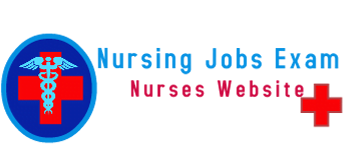All living things are composed of cells. A single cell is the smallest unit that has all the characteristics of life. The cell is defined as the structural and functional unit of the living body.
General Characteristics of Cell
Each cell in the body:
1. Needs nutrition and oxygen
2. Produces its own energy necessary for its growth, repair, and other activities
3. Eliminates carbon dioxide and other metabolic wastes
4. Maintains the medium, i.e. the environment for its survival.
5. Shows immediate response to the entry of invaders like bacteria or toxic substances into the body
6. Reproduces by division. There are some exceptions like neurons, which do not reproduce.
TISSUE
Tissue is defined as the group of cells having similar functions. There are many types of tissues in the body. All the tissues are classified into four major types which are called the primary tissues. The primary tissues include:
1. Muscle tissue (skeletal muscle, smooth muscle, and cardiac muscle).
2. Nervous tissue (neurons and supporting cells).
3. Epithelial tissue (squamous, columnar, and cuboidal epithelial cells).
4. Connective tissue (connective tissue proper, cartilage, bone, and blood).
ORGAN
An organ is defined as the structure that is formed by two or more primary types of tissues, which execute the functions of the organ. Some organs are composed of all four types of primary tissues. The organs are of two types, namely tubular or hollow organs and compact or parenchymal organs. Some of the organs in the body are the brain, heart, lungs, stomach, intestine, liver, gallbladder, pancreas, kidneys, endocrine glands, etc.
SYSTEM
The organ system is defined as group of organs that work together to carry out specific functions of the body. Each system performs a specific function. The digestive system is concerned with digestion of food particles. Excretory system eliminates unwanted substances. Cardiovascular system is responsible for transport of substances between the organs. Respiratory system is concerned with the supply of oxygen and removal of carbon dioxide. Reproductive system is involved in the reproduction of species. Endocrine system is concerned with growth of the body and regulation and maintenance of normal life. Musculoskeletal system is responsible for stability and movements of the body. Nervous system controls the locomotion and other activities including the intellectual functions.
STRUCTURE OF THE CELL
Each cell is formed by a cell body and a membrane covering the cell body called the cell membrane. Cell body has two parts, namely nucleus, and cytoplasm surrounding the nucleus. Thus, the structure of the cell is studied under three headings:
1. Cell membrane
2. Cytoplasm
3. Nucleus.

CELL MEMBRANE
Cell membrane is a protective sheath, enveloping the cell body. It is also known as plasma membrane or plasmalemma. This membrane separates the fluid outside the cell called extracellular fluid (ECF) and the fluid inside the cell called intracellular fluid (ICF). The cell membrane is a semipermeable membrane. So, there is free exchange of certain substances between ECF and ICF. Thickness of the cell membrane varies from 75 to 111Å.
COMPOSITION OF CELL MEMBRANE
Cell membrane is composed of three types of substances:
1. Proteins (55%).
2. Lipids (40%).
3. Carbohydrates (5%).
STRUCTURE OF CELL MEMBRANE
On the basis of structure, cell membrane is called a unit membrane or a three-layered membrane. The electron microscopic study reveals three layers of cell membrane, namely, one central electron-lucent layer and two electron-dense layers. The two electron-dense layers are placed one on either side of the central layer. The central layer is a lipid layer formed by lipid substances. The other two layers are protein layers formed by proteins. Cell membrane contains some carbohydrate molecules also.
Structural Model of the Cell Membrane
1. Danielli-Davson model
‘DanielliDavson model’ was the first proposed basic model of membrane structure. It was proposed by James F Danielli and Hugh Davson in 1935. And it was accepted by scientists for many years. This model was basically a ‘sandwich of lipids’ covered by proteins on both sides.

2. Unit membrane model
In 1957, JD Robertson replaced the ‘DanielliDavson model’ by ‘Unit membrane model’ on the basis of electron microscopic studies.
3. Fluid mosaic model
Later in 1972, SJ Singer and GL Nicholson proposed ‘The fluid mosaic model’. According to them, the membrane is a fluid with mosaic of proteins (mosaic means pattern formed by arrangement of different colored pieces of stone, tile, glass, or other such materials). This model is accepted by scientists till now. In this model, the proteins are found to float in the lipid layer instead of forming the layers of the sandwich-type model.
Lipid Layers of the Cell Membrane
The central lipid layer is a bilayered structure. This is formed by a thin film of lipids. The characteristic feature of lipid layer is that, it is fluid in nature and not a solid structure. So, the portions of the membrane move from one point to another point along the surface of the cell.
The materials dissolved in lipid layer also move to all areas of the cell membrane.
Major lipids are:
1. Phospholipids.
2. Cholesterol.
Phospholipids
phospholipids are lipid substances containing phosphorus and fatty acids. Aminophospholipids, sphingomyelins, phosphatidylcholine, phosphatidylethanolamine, phosphatidylglycerol, phosphatidylserine and phosphatidylinositol are the phospholipids present in lipid layer of cell membrane.
Phospholipid molecules are arranged in two layers. Each phospholipid molecule resembles the headed pin in shape. The outer part of the phospholipid molecule is called the head portion and the inner portion is called the tail portion.
Head portion is the polar end and it is soluble in water and has strong affinity for water (hydrophilic). Tail portion is the non-polar end. It is insoluble in water and repelled by water (hydrophobic).
Two layers of phospholipids are arranged in such a way that the hydrophobic tail portions meet in the center of the membrane. Hydrophilic head portions of outer layer face the ECF and those of the inner layer face ICF (cytoplasm).
Cholesterol
Cholesterol molecules are arranged in between the phospholipid molecules. Phospholipids are soft and oily structures and cholesterol helps to ‘pack’ the phospholipids in the membrane. So, cholesterol is responsible for the structural integrity of lipid layer of the cell membrane.
Functions of Lipid Layer in Cell Membrane
Lipid layer of the cell membrane is a semipermeable membrane and allows only the fat-soluble substances to pass through it. Thus, the fat-soluble substances like oxygen, carbon dioxide and alcohol can pass through this lipid layer. The water-soluble substances such as glucose, urea and electrolytes cannot pass through this layer.
Protein Layers of the Cell Membrane
Protein layers of the cell membrane are electron-dense layers. These layers cover the two surfaces of the central lipid layer. Protein layers give protection to the central lipid layer. The protein substances present in these layers are mostly glycoproteins.
Protein molecules are classified into two categories:
1. Integral proteins or transmembrane proteins.
2. Peripheral proteins or peripheral membrane proteins.
1. Integral proteins
Integral or transmembrane proteins are the proteins that pass through entire thickness of cell membrane from one side to the other side. These proteins are tightly bound with the cell membrane.
Examples of integral protein:
i. Cell adhesion proteins
ii. Cell junction proteins
iii. Some carrier (transport) proteins
iv. Channel proteins
v. Some hormone receptors
vi. Antigens
vii. Some enzymes.
2. Peripheral proteins
Peripheral proteins or peripheral membrane proteins are the proteins which are partially embedded in the outer and inner surfaces of the cell membrane and do not penetrate the cell membrane. Peripheral proteins are loosely bound with integral proteins or lipid layer of cell membrane. So, these protein molecules dissociate readily from the cell membrane.
Examples of peripheral proteins:
i. Proteins of cytoskeleton
ii. Some carrier (transport) proteins
iii. Some enzymes.
Functions of Proteins in Cell Membrane
1. Integral proteins provide the structural integrity of the cell membrane
2. Channel proteins help in the diffusion of water-soluble substances like glucose and electrolytes
3. Carrier or transport proteins help in the transport of substances across the cell membrane by means of active or passive transport
4. Pump: Some carrier proteins act as pumps, by which ions are transported actively across the cell membrane
5. Receptor proteins serve as the receptor sites for hormones and neurotransmitters
6. Enzymes: Some of the protein molecules form the enzymes and control chemical (metabolic) reactions within the cell membrane
7. Antigens: Some proteins act as antigens and induce the process of antibody formation
8. Cell adhesion molecules or the integral proteins are responsible for attachment of cells to their neighbors or to basal lamina.
Carbohydrates of the Cell Membrane
Some of the carbohydrate molecules present in cell membrane are attached to proteins and form glycoproteins (proteoglycans). Some carbohydrate molecules are attached to lipids and form glycolipids.
Carbohydrate molecules form a thin and loose covering over the entire surface of the cell membrane called glycocalyx.
Functions of Carbohydrates in Cell Membrane
1. Carbohydrate molecules are negatively charged and do not permit the negatively charged substances to move in and out of the cell
2. Glycocalyx from the neighboring cells helps in the tight fixation of cells with one another.
3. Some carbohydrate molecules function as receptors for some hormones.
FUNCTIONS OF CELL MEMBRANE
1. Protective function: Cell membrane protects the cytoplasm and the organelles present in the cytoplasm
2. Selective permeability: Cell membrane acts as a semipermeable membrane, which allows only some substances to pass through it and acts as a barrier for other substances
3. Absorptive function: Nutrients are absorbed into the cell through the cell membrane
4. Excretory function: Metabolites and other waste products from the cell are excreted out through the cell membrane
5. Exchange of gases: Oxygen enters the cell from the blood and carbon dioxide leaves the cell and enters the blood through the cell membrane
6. Maintenance of shape and size of the cell: Cell membrane is responsible for the maintenance of shape and size of the cell.





